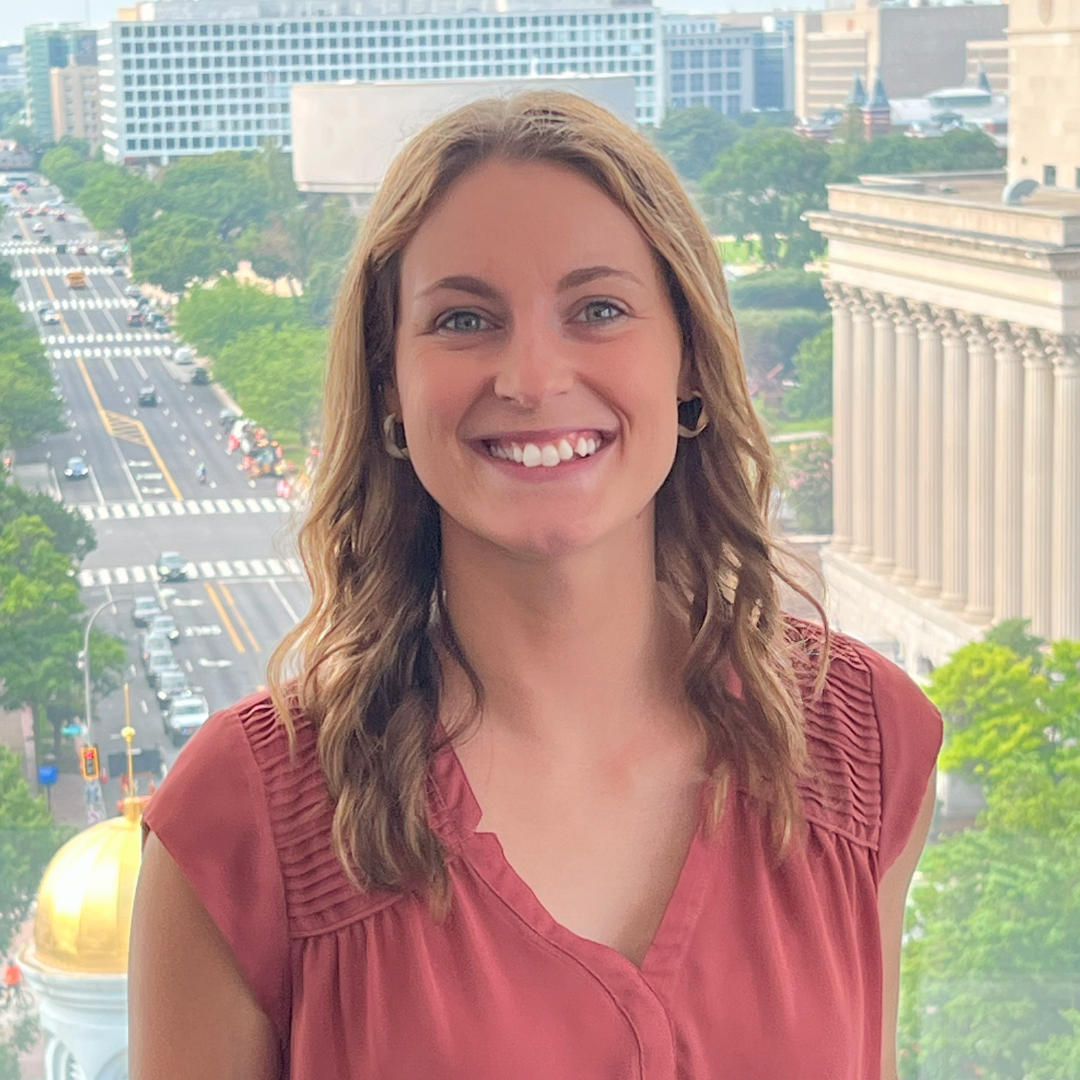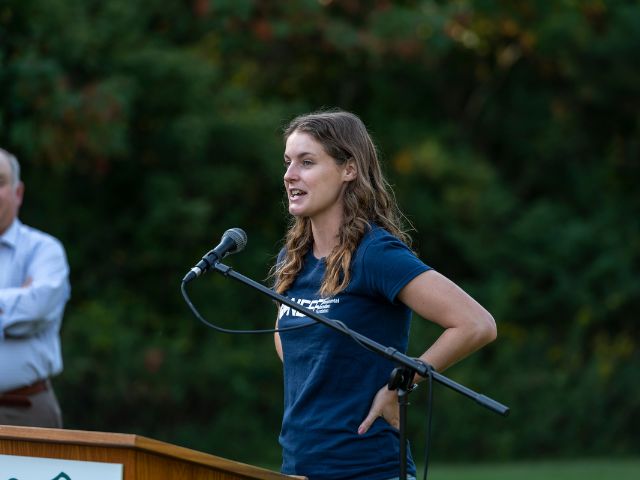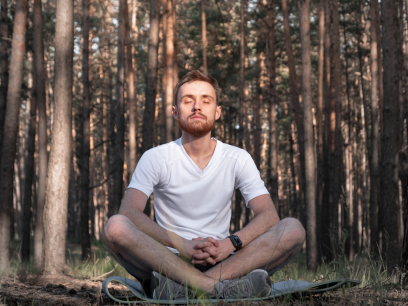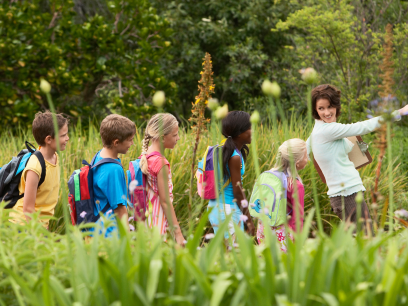
What does a successful, inclusive volunteer event look like? One size does not fit all.
“The goal is to have participation that is reflective of your community,” said Kelly Burnett, program director for conservation at NEEF. That answer may sound simple, but it takes planning, creativity, and intentionality to achieve.
During the 2024 Points of Light Conference, Burnett and Megan Urban, supervisory park ranger at the National Park Service’s (NPS) Big Thicket National Preserve, were invited to share lessons learned over the past 30 years of National Public Lands Day (NPLD), the nation's largest single-day volunteer effort for public lands. From trail maintenance to tree planting, beach clean-ups to forest bathing, and more, between 600-1,000 events are hosted during NPLD each year, providing many real-world examples of successful volunteer engagement strategies.

Points of Light is a global nonprofit organization founded by former President George H.W. Bush that brings together nonprofit, government, business, and civic leaders from around the globe and across different sectors in support of civic engagement. NEEF and NPS brought a unique perspective during their presentation as public-private partners connecting people with the outdoors. Burnett also drew on her firsthand community engagement experience planning environmental education events with local nonprofit organizations in Houston, Texas, prior to joining NEEF.
“One of my favorite parts of my job is that I get to help the people who are helping people in their communities,” said Burnett. “The lessons NEEF learns from past events don’t just go into a database somewhere—they create best practices that are ultimately used throughout the country.”
What Makes an Inclusive Volunteer Event?
The first step to ensuring your event is inclusive is to consider the barriers to entry. What could potentially be holding people back from getting involved? Consider common challenges, such as participation fees, transportation, and timing. The registration process can also deter people who are reluctant to give away too much personal information. Taking walk-ins on the day of the event can go a long way to making the experience feel more welcoming.
The location of your event also matters. Hiking even a mile can be intimidating to some people. Hosting an event in the “front country” near accessible roads and trails can encourage participation from people with physical disabilities or who have young children.
“Try to make sure everyone feels welcome,” said Burnett. “Pick projects and locations that feel safe.” Even better, choose projects like tree planting or brush clearing that clearly show progress so new volunteers can easily visualize their impact and connect it to your organization’s mission.
The photos and language used in recruitment matters are important as well. Provide as many details as possible about the event or project so everyone knows what to expect. Ensure that the marketing materials represent the communities you are working in. Use high-quality imagery to show that everyone can enjoy the outdoor space together.
Don’t use photos that single out a person with a disability or of a specific ethnicity. Instead, show groups of people volunteering with their families and friends. The ADA National Network provides guidelines for thoughtful language to use when writing about people with disabilities and communicating accessibility information.
“Language holds meaning,” said Burnett. “Often, people are afraid to say the wrong thing, so they don’t say anything. But that can ultimately exclude someone.”
Understanding Common Barriers to Volunteerism
Funding is a common challenge for nonprofits that can impact the accessibility of their programming. Many tactics that make programs more inclusive—from hiring an interpreter to providing transportation vouchers—come with a price tag.
“It is important to acknowledge that these strategies cost money. Think about them when putting together your annual budget,” said Burnett.
Burnett explained that nonprofits can pursue funding opportunities from many different sources, including federal, state, local, and private grants; local banks; corporate volunteer grants (that match the value of volunteer hours donated by employees); and corporate sponsorships for events. The AmeriCorps Volunteer Generation Fund is an additional funding source to explore.
In the long-term, look for incremental ways to update your facilities and programming. For example, installing an accessible picnic table costs the same as a non-accessible version, so be intentional about the upgrades you plan for your site over time.
Building authentic relationships with other community groups can help overcome the hurdle of reaching key audiences who you don’t already work with. Spend time building trust with other organizations before your event. Be sure that the local chapters of groups serving your community—GirlTREK, LGBT Outdoors, and Latino Outdoors are just a few examples—are invited to participate and share information about your event. Think creatively about how and where you are getting the word out.
National Public Lands Day is a perfect opportunity to develop these new relationships. It can be a win-win to leverage your combined resources and networks toward a common goal. Working together can also strengthen future grant proposals.
“This could open the door to building an authentic, long-lasting working relationship long after NPLD ends,” said Burnett.

Plan Ahead for an Inclusive National Public Lands Day
The next NPLD is coming up fast on September 28, 2024—has your organization started planning an event yet?
“It is always helpful if you can incorporate inclusivity from the beginning,” said Burnett. “However, there are no wrong answers on this journey! If you have an event already planned but want to make it more inclusive, review your marketing strategy and think creatively to ensure you are reaching the entire community.”
Another way to take your volunteer engagement to the next level: Treat your volunteers like the VIPs that they are. If you are working to build relationships with new volunteers, consider providing an incentive in return. Can you make half of your event something fun or unique, like a behind-the-scenes tour or access to a guest speaker? These initial interactions with new volunteers are crucial to helping them feel connected to your mission, which will keep them coming back.
Click here to register your National Public Lands Day event!
Free Resources to Make Your Next Volunteer Event More Inclusive
When it comes to inclusivity, organizations should strive for continuous improvement. What steps can you take today to make your next event more accessible?
“Remember, we are all still learning—this is a process,” said Burnett “The goal is progress, not perfection.”
Look to these resources for help on your journey to make your events and programming more inclusive.
- NEEF Public Land Engagement Guides: Developed in partnership with NPS and USDA Forest Service, these guides cover key strategies for planning and executing successful environmental education and health and wellness events on public lands of all types and sizes.
- NEEF/NPS Power of Parks for Health Roundtable Series: This series of webinars (archived on YouTube) discusses equity, health, healing, and wellness in the outdoors for individuals representing communities that have been historically marginalized from green spaces.
- NEEF Nature for All Webinar Series: For this series of webinars (archived on YouTube), NEEF partnered with three organizations focused on working with people from Spanish-speaking, Disability, and LGBTQ+ communities, all of which are often underrepresented in the outdoor space.
- NEEF Webinar - “More Than a Clean Up: Adding Variety to Your NPLD Event”: Which types of activities can enrich your event and increase awareness around other topics, like health, diversity, and art? Learn tips for designing an event that helps make public lands more inclusive.
- National Recreation and Park Association’s (NRPA) Park and Recreation Professionals’ Guide to Fundraising: This free resource outlines innovative development strategies and shows that fundraising doesn’t have to be daunting.


